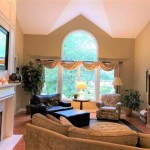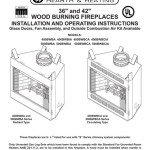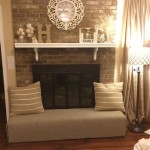Indoor Gas Fireplace with Propane Tank: A Comprehensive Guide
An indoor gas fireplace fueled by a propane tank offers a convenient and aesthetically pleasing alternative to traditional wood-burning fireplaces. This heating solution provides warmth and ambiance without the mess and effort associated with handling firewood. However, understanding the specifics of installation, safety, and maintenance is crucial for ensuring the safe and efficient operation of a propane-fueled indoor gas fireplace.
The attraction of a propane gas fireplace lies in its ease of use. With a simple flick of a switch or a push of a button, the fireplace ignites, providing instant heat. This eliminates the need to build a fire, wait for it to catch, and constantly tend to it. Moreover, gas fireplaces produce significantly fewer emissions than wood-burning fireplaces, contributing to better indoor air quality.
The installation of a propane-fueled gas fireplace often requires professional expertise, especially when connecting the fireplace to a propane tank. Local building codes and safety regulations must be strictly adhered to. The propane tank itself needs to be properly sized based on the fireplace's BTU (British Thermal Unit) rating and the anticipated usage. Incorrect sizing can lead to insufficient fuel supply or, in extreme cases, pose a safety hazard.
The following sections will delve into key aspects of indoor gas fireplaces with propane tanks, including the advantages, installation considerations, safety precautions, and maintenance requirements.
Advantages of Propane Gas Fireplaces
Propane gas fireplaces offer a compelling combination of benefits that make them an attractive choice for homeowners. These advantages extend beyond mere convenience and encompass cost-effectiveness, environmental considerations, and aesthetic flexibility.
One of the primary advantages is convenience. Unlike wood-burning fireplaces, gas fireplaces require minimal effort to operate. Starting a fire is as simple as turning a knob or pressing a button. There is no need to haul wood, build a fire, or clean up ashes. This ease of use makes gas fireplaces ideal for individuals with limited mobility or those who simply prefer a hassle-free heating option.
Secondly, gas fireplaces are generally more energy-efficient than traditional wood-burning fireplaces. A significant portion of the heat generated by a wood-burning fireplace escapes through the chimney. Gas fireplaces, on the other hand, are often designed with sealed combustion systems that maximize heat retention. Some models even feature thermostats that automatically adjust the flame height to maintain a desired temperature, further enhancing energy efficiency.
Cost-effectiveness is another significant benefit. While the initial investment in a gas fireplace and propane tank might be higher than that of a traditional fireplace, the long-term operating costs can be lower. Propane prices are often more stable than wood prices, and the reduced need for maintenance and cleaning can also save homeowners money. Moreover, the increased energy efficiency of gas fireplaces can translate into lower heating bills.
Furthermore, propane gas fireplaces offer greater design flexibility. They are available in a wide range of styles, from traditional to contemporary, allowing homeowners to choose a model that complements their home décor. They can be installed in various locations within the home, including areas where a traditional chimney is not feasible. Ventless models, in particular, offer even greater installation flexibility, although they must be used with caution and in accordance with manufacturer instructions and local regulations.
Environmentally, propane gas fireplaces are a cleaner-burning alternative to wood-burning fireplaces. They produce significantly fewer emissions, including particulate matter and carbon monoxide, contributing to improved air quality both indoors and outdoors. Propane is also a relatively clean-burning fuel compared to other fossil fuels, such as oil and coal.
Finally, gas fireplaces provide a consistent and reliable heat source. Unlike wood-burning fireplaces, which require constant tending to maintain a consistent flame, gas fireplaces provide a steady stream of heat at the desired level. This is particularly beneficial during power outages, as gas fireplaces can often operate independently of the electrical grid, providing a source of heat and light.
Installation Considerations for Propane-Fueled Gas Fireplaces
Proper installation is paramount for the safe and efficient operation of an indoor gas fireplace fueled by a propane tank. Several critical considerations must be addressed during the installation process to ensure compliance with safety regulations and optimal performance.
Firstly, selecting the appropriate fireplace model is crucial. Factors to consider include the size of the room to be heated, the desired aesthetic, and the venting requirements. Ventless fireplaces, while offering installation flexibility, require careful consideration of indoor air quality and ventilation. Vented fireplaces, on the other hand, require a chimney or vent system to exhaust combustion byproducts.
Secondly, proper propane tank sizing is essential. The size of the tank should be determined based on the fireplace's BTU rating and the anticipated usage. A tank that is too small will run out of fuel quickly, while a tank that is too large may be unnecessary and costly. A qualified propane supplier can assist in determining the appropriate tank size.
Thirdly, the location of the propane tank must comply with local regulations and safety standards. Propane tanks should be located outdoors, away from sources of ignition, and in a well-ventilated area. The tank should also be accessible for refilling and maintenance. Underground tanks offer aesthetic advantages but require specialized installation and maintenance.
Fourthly, the gas line connecting the propane tank to the fireplace must be properly installed and pressure-tested. This is best left to a qualified professional. The gas line should be made of appropriate materials and installed according to code. Leaks in the gas line can pose a serious fire hazard.
Fifthly, proper ventilation is crucial, especially for vented fireplaces. The chimney or vent system must be in good working order and free from obstructions. Regular inspections and cleaning are necessary to ensure proper ventilation and prevent carbon monoxide buildup.
Sixthly, carbon monoxide detectors should be installed near the fireplace and in other areas of the home. Carbon monoxide is a colorless, odorless gas that can be deadly. Properly functioning carbon monoxide detectors are essential for alerting occupants to the presence of this dangerous gas.
Finally, professional installation is highly recommended. A qualified installer will have the knowledge and experience necessary to ensure that the fireplace is installed correctly and safely. They will also be familiar with local building codes and safety regulations. Attempting to install a gas fireplace without proper training can be dangerous and may void the manufacturer's warranty.
Safety Precautions for Propane Gas Fireplaces
Safety is paramount when operating an indoor gas fireplace fueled by a propane tank. Adhering to safety precautions minimizes the risk of accidents and ensures the well-being of occupants. These precautions encompass regular inspections, proper ventilation, and adherence to manufacturer guidelines.
Regular inspections are essential for identifying potential problems before they escalate. The fireplace, gas line, and propane tank should be inspected regularly for leaks, damage, and corrosion. A qualified technician should perform a thorough inspection at least once a year. Pay specific attention to the gas connections, looking for any signs of wear or damage. If a leak is suspected, immediately turn off the gas supply and contact a qualified professional.
Proper ventilation is crucial for preventing carbon monoxide buildup. Ensure that the chimney or vent system is clear of obstructions and functioning properly. Never block or obstruct the vents of a ventless fireplace. Carbon monoxide detectors should be installed and tested regularly to ensure they are functioning properly. Replace batteries in carbon monoxide detectors at least twice a year.
Never store flammable materials near the fireplace. Keep curtains, furniture, and other combustible items at a safe distance from the fireplace. Do not use the fireplace to dry clothes or other items. This can create a fire hazard.
Follow the manufacturer's instructions for operating and maintaining the fireplace. Read the owner's manual carefully and adhere to all recommended procedures. Use only the type of fuel specified by the manufacturer. Do not attempt to modify the fireplace in any way. Modifications can compromise the safety of the unit and void the warranty.
Teach all occupants of the home how to operate the fireplace safely and how to respond in case of an emergency. This includes knowing how to turn off the gas supply and how to recognize the symptoms of carbon monoxide poisoning. Post emergency contact information near the fireplace.
Be aware of the signs of a gas leak. These include a sulfur-like odor, a hissing sound, or a visible cloud of vapor. If you suspect a gas leak, evacuate the area immediately and contact a qualified professional or the gas company. Do not use any electrical devices or open flames, as these could ignite the gas.
Ensure that the propane tank is properly maintained and inspected regularly. The tank should be free from rust and corrosion. The pressure relief valve should be functioning properly. A qualified propane supplier can perform these inspections and make any necessary repairs.
Finally, never leave a gas fireplace unattended, especially if children or pets are present. While modern gas fireplaces are designed with safety features, they are still a potential fire hazard. Always supervise the fireplace and ensure that it is turned off when not in use.

Propane Fireplaces An Economic Fuel

Propane Fireplace Inserts Gas Log Sets Tunkhannock Pa Ace Robbins

How Much Propane Does An Indoor Fireplace Use Magikflame

Energy Efficiency How Much Propane Does A Fireplace Use 2024 Guide Ubuntu Manual

Propane Tanks Fuel New Holland Pa Nolts Connections

Dimplex Indoor Propane Fireplace 4326 Serise 1 Sided 43 X 26

Lpg Gas Fires What You Need To Know Direct Fireplaces

Comparing Wood And Propane Heat Tiny Stove

Gas Fireplace Logs Propane My Butler

Propane Fireplaces An Economic Fuel
Related Posts








